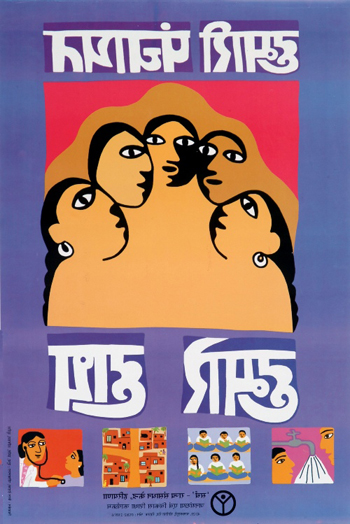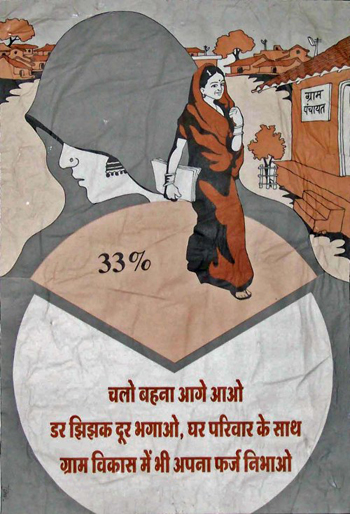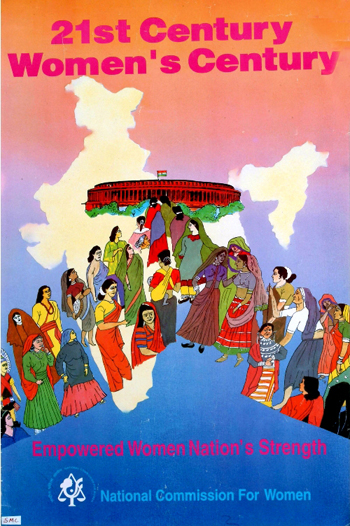Picturing Power
Indian Feminist Publisher Zuban Books Celebrates Women

The Poster Women Project was conceived and coordinated by Indian feminist publisher Zubaan Books. They map and preserve the history of India's women's movement through the images it produced. The vibrant posters they collect were created to inspire, teach and celebrate women's causes. In many cases, these posters speak in an entirely visual language, necessary when many of the intended audiences cannot necessarily read. We've selected some examples here that relate directly to women's participation in Indian politics.
The posters traveled across India in an exhibition, and are collected in the accompanying catalog Poster Women, published by Zubaan Books. In this excerpt, Zubaan explains why, and how, the Poster Women project came about.
Since the early seventies, the period that is characterized as giving rise to the contemporary women's movement in India, virtually every campaign has been marked by the production of interesting, colourful, eye-catching posters.
For the many feminist/women's groups that were born at this time out of student, left and peasant movements, the poster played an important role and remained an important mobilizational tool. Tragically, however, if there is one thing activist groups lack, it is an understanding of the importance of documenting their own history. And preserving the primary material they generate. Thus much of the history of activism, of organizing and mobilizing, of the euphoria of the early days of street level protest, has been lost to the movement and to history. Posters, being even more ephemeral than documents and other 'grey' literature, have also, by and large, suffered this fate. And yet, as this project shows, not everything is lost.
The Poster Women project began with the idea of locating and archiving as many posters of the movement as possible.
When the project began, we had no idea it would catch on so fast, or that individuals and groups from all over the country would respond so enthusiastically. Posters began to pour in, in all kinds of shapes and sizes, some in very fragile condition, others wonderfully preserved. Many groups had no idea where their posters had gone, several said they had no time to locate posters as there were more pressing issues to deal with. Many knew they had this or that poster, but did not have the time to sift through endless piles of paper to locate them. Nonetheless, we managed to garner some 1500 posters and it is these that provided the base for this exhibition, and its accompanying catalogue.
Our collection, however, is uneven. There are issues, such as violence against women, on which the movement has generated a large number of images. But there are others such as the anti-alcohol campaign, or the campaign against widow immolation, on which there is very little. Similarly, some regions and languages remain unrepresented--groups from the south of India, for example, did not respond so well to our appeals for posters, and while some did send in material, many found they had not stored posters and so they had little to contribute. It is our hope that as groups see the use of the posters, we will be able to garner more material, and therefore trace a richer history.
The project itself does not end [with the exhibition.] Original prints of the posters, where available, will be housed in the Sound and Picture Archives for Women (SPARROW) in Mumbai.
SPARROW will also house original digital scans of the entire collection. As well, each participating group -- and there are at least 200 of these -- will receive a full CD of all the posters that we have collected. This is intended as a resource and for educational use. In this way, we envisage that this project will have a life beyond the exhibition.



